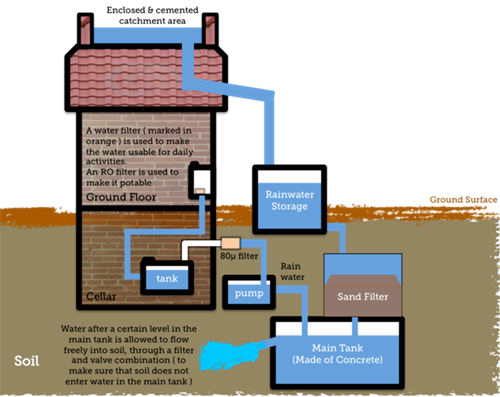PDF chapter test TRY NOW
The following are some of the strategies for managing and conserving water resources:
1. Rainwater harvesting:
Alternatives to dams have been sought by the government and various organisations. Water obtained through rain generally flows away as surface runoff. Rainwater can be saved and is used to replenish the groundwater levels of the earth.
Rainwater harvesting is a technique of collecting and storing rainwater for future use.
It can also be defined as:
The process of preventing the rainwater from flowing away and storing it for different purposes is called rainwater harvesting.
It is atraditional way of storing rainwater in underground tanks, lakes, ponds, and check-dams to be used in the future. The primary goal of rainwater harvesting is to allow the rainwater to percolate into the ground to replenish or recharge the "groundwater level". In the present day, rainwater harvesting includes both water storage and groundwater recharge.
Rainwater collected from the rooftop of a house or building is then filtered and stored in appropriate tanks. This stored water can be used for human consumption, irrigation, or channelled through a drain pipe into a well to raise the water table.

Rainwater harvesting
Advantages of rainwater harvesting:
1. Rainwater harvesting overcomes the rapid depletion of groundwater levels.
2. Rainwater harvesting helps to meet the rising freshwater demand.
3. Rainwater harvesting lowers the risk of flooding and soil erosion.
4. Water stored in the ground is not contaminated by human or animal wastes and can thus be utilised for drinking.
